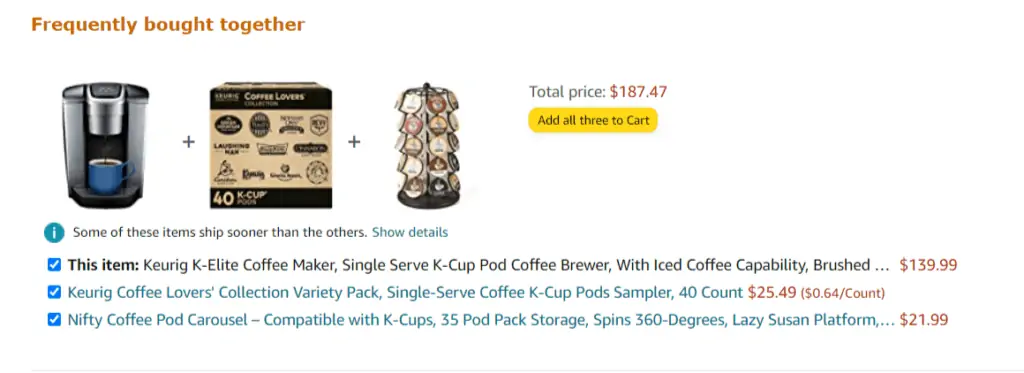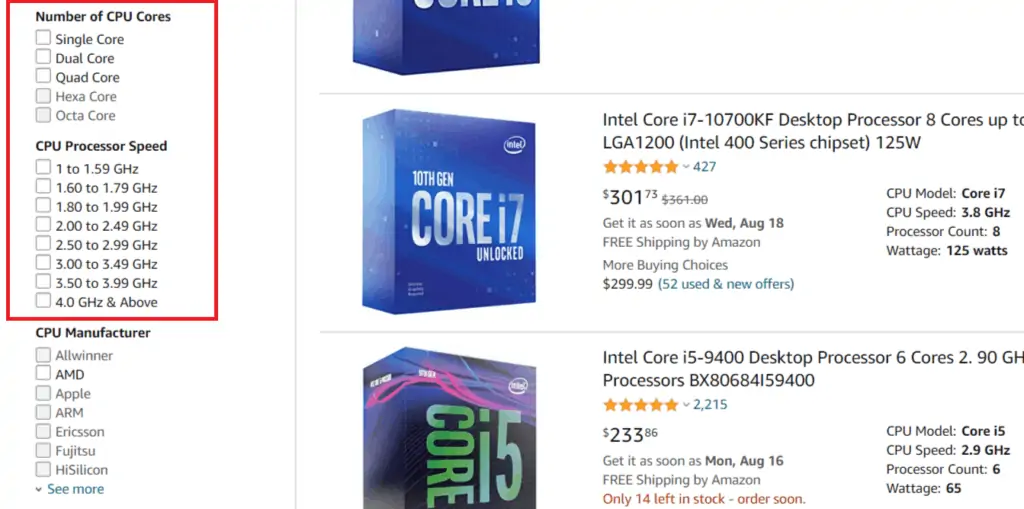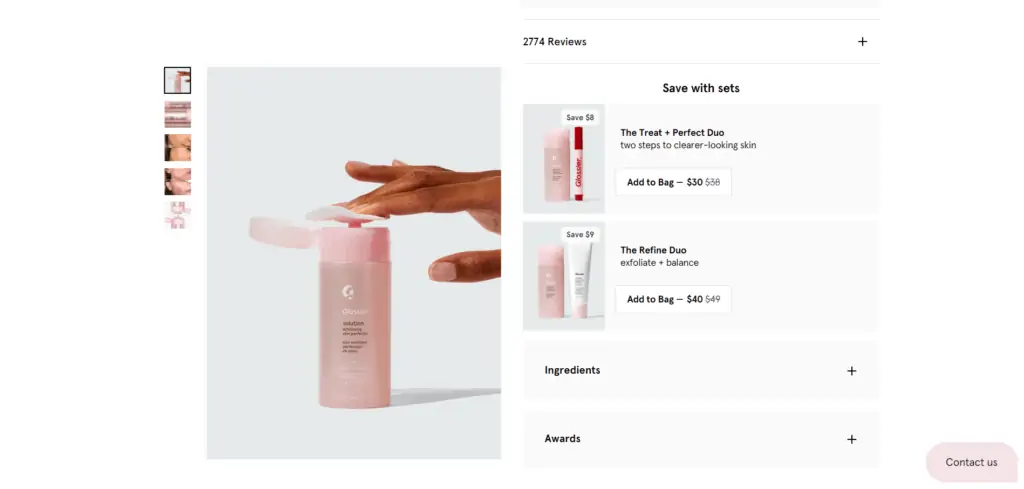Upsells are the most profitable part of your business. They tend to account for the majority of your business revenue.2
It takes your current customers and incentivizes them to buy a better product, basically incrementing your revenue without having to acquire new customers.
For your online store, upselling is essential for:
- Keeping a steady flow of revenue for your business.
- Retaining customers so they buy from your brand regularly.
- Engage new customers.
- Build a long-term relationship with your customers.
And the reason upselling works is simple: it’s easier to sell to current customers than to new prospects.
You see, too many business owners invest too much effort acquiring new customers without realizing that most of the revenue comes from their current customer base.
If you’re not like them, keep reading because this post will cover the essentials of upselling for ecommerce stores.
What’s Upselling?
Upselling is about selling a better, more efficient product to the customer right before (or even after) they buy an item. This, in order to make customers buy your best product and increase your average order value.
Upsells are often more expensive while providing more value and features. The main reason your customers would buy is to get a better deal for their money.
For example, if you’re selling coffee makers and your prospect adds a single cup coffee maker for $40. You could offer a bigger machine for two cups and an automatic dispenser at $55.
The price is higher, but you get much more value out of your buck.
Cross Selling vs. Upselling: What’s The Difference?
Despite having clear differences, upselling is often confused with cross-selling as they
both try to get more sales out of their customers.
However, their differences are pretty evident:
- Upselling tries to upgrade customers to a higher tier of products.
- Cross-selling tries to complement the customer’s purchase with more accessories and products that are often bought together.
When it comes to cross-sells, the tactics may vary a lot.
In the same example of the coffee makers, you could sell a coffee mug set, an exceptional Colombian coffee, an espresso maker, and so on.
Amazon does this all the time.

However, if you’re reading this, you probably aren’t working at Amazon right now. That’s why you must learn about cross-selling as well.
Benefits of Upselling For Your Ecommerce
If it weren’t for its benefits, upselling wouldn’t be such a valuable strategy at all.
As explained earlier, the upsell’s job is to help your customers make a better buying decision—the benefits are inevitably positive.
Some of its positives for your business include:
- More revenue coming from your sales.
- Offering a personalized shopping experience.
- Building a relationship right away, improving customer retention.
- Expanding your brand’s good reputation.
One thing stays true: you must do it well in order to make it work. The mere fact that you tried upselling won’t automatically increase your revenue out of nowhere.
And that’s why learning the upselling best practices will help you get the most value out of your strategies.
7 Upselling Best Practices to Grow Your Ecommerce Revenue (+Examples)
Upsells—when done well—can account for more than half of your business revenue.
But this will only happen if you follow the best practices and have the patience to go through all the testing until you hit the nail.
These best practices are what you’re going to read right next.
1. Use Upselling Ecommerce Tools
Even if you know how to code, it’s more efficient to use already existing tools to do your upselling, as it will often take less time and even less money to install a perfectly functional tool right away.
The way an upselling tool works is simple: it will let you create upsell and cross-sell offers and include them on the cart page, the product pages, or emails.
Plus, they can bring hyper-personalized recommendations to a customer based on their activity and shopping behavior—which is pretty much impossible to do manually at scale.
Here are some highly praised upselling tools that you can use depending on your platform:
- Shopify’s Product Upsell. A Shopify app you can use if you run your store on Shopify.
- BigCommerce’s Easy Upsell. An upsell app for BigCommerce stores that let you set up personalized upsells when a customer selects a “trigger product” and much more.
- Magento’s Mass Product Relater. A Magento extension that allows you to show related items and recommendations on your product pages.
- WooCommerce Recommendations. This WordPress plugin lets you include offers in shopping carts and product pages if you use WooCommerce.
- Morphl.io’s platform. You can use this tool to personalize your marketing with AI and machine learning, including intelligent upsells. A great option if you don’t use any popular ecommerce platform.
Once you’ve selected a tool, you can start plotting about your upsell strategies and how to execute them.
2. Categorize Your Products into Different Tiers
Upselling is to encourage customers to upgrade to a higher tier.
And to do so, you must categorize your whole catalog into different pricing ranges, capacity, or power.
Laptops are a great example of this. Let’s say you want to convince customers to upsell to a high-end machine. There’re many ways to categorize them, such as:
- Student/work laptops for essential use.
- Low-end laptops for families.
- Mid-end gaming laptops for casual play.
- Top-tier laptops for dedicated players, designers, or developers.
- Macbooks for apple users.
A higher tier always means higher prices. Your job is to convince your prospects that they’re paying less by buying more.
If you don’t know how to categorize your products, check Amazon and see how they do it with all products.

3. Place Your Upsells in The Right Channels
Now that you know which products to upsell. You should determine where to offer the upsells.
Your success will directly depend on where you place them. As the way you’ll try to sell your offer will highly depend on whether your customer already bought a product, added items to their cart, or if they’re just browsing through your catalogs.
The best places to add offers are:
- On the cart page, when your prospect is about to make a purchase.
- On the product pages, when the visitors are looking for the best deal.
- Email sequences offering deals and recommended products according to their shopping history. You can send these emails weeks or even months later when the customer might consider buying again.
- Out-of-stock product pages. So instead of disappointing your prospects, you can lead them to a more valuable purchase.
At all costs, avoid placing your upsells too early in the customer’s journey, such as the homepage, registration page, or on ads. You should only show your upsells when the customer is already interested in buying.
Glossier does this all the time on their product pages. Glossier offers multiple “sets” with other similar products at a discount, making you buy two products instead of a slightly expensive one.

4. Keep It Simple and Personal
It’s more effective to upsell one highly relevant product than ten different products that only share the category.
Personalizing your upsells is crucial because it makes your recommendations feel like they were made for your customer and not prey on their money.
Failing to do so will make them feel overwhelmed and annoyed—making them bounce back from your site.
Compared to the product you’re trying to replace. Your upsell must have either:
- Better features. Such as more capacity, more options, better materials, better use case.
- More ratings and positive reviews.
- Limited discount or stock.
- Come in a bundle along with other accessories and complementary items.
- Free shipping, 30-day back guarantee, or an AfterPay payment option.
The perceived value of your upsell offer must be overwhelmingly higher than the regular product. So valuable that your customer would feel bad for not taking it.
5. Focus on Repeat Customers
It’s five times easier to sell to a current customer than a new one.
The reason is simple: new prospects don’t trust you enough to spend too much money on their first order with you.
On the other hand, your current customers already know that your brand is legitimately good, so they aren’t afraid of spending more money if their past experience was satisfactory—which is a kind of trust that new prospects don’t have.
So when taking the most out of your upsells, make sure to avoid putting too much pressure on your new prospects, or you might lose them.
Instead, focus all your upsells on recurrent customers by sending them emails, notifications, SMS, or any marketing channel to offer them irresistible offers that they won’t deny.
For example, you can see how H&M is always sending emails with multiple offers. They know you’ve bought before, and they want to recommend you good so you can keep getting up-to-date.

6. Present Your Upsell Effectively
The pricier your products, the harder to sell them.
While your customers must be able to buy your upsell with a single click, many prospects will want to know more about it.
That’s why it’s critical to present your offers properly—so your conversions are as high as possible.
Depending on how pricey your products are, you can do this with a more elaborated product page, a landing page, or even a video sales letter.
The essential elements of a profitable upsell includes:
- Persuasive copy that drives action.
- Comparison table illustrating why your offer is superior.
- Pricing difference with other products.
- An urgency element, such as a discount or limited stock.
- Easy buying process.
Bonfire makes a great effort to sell their bonfire, for example. Its product page has a pretty long product description, along with video demonstrations, specifications, and even an FAQ. You could easily redirect an ad or an upselling email to this page effectively.

7. Upselling The Upsell
Always try to upgrade your customers to a higher tier.
Just look at how Apple manages to sell new iPhones every year, which ends up costing like $100 per month to the average Steve Jobs fan.
Of course, you’re not Apple to accomplish such a feat. But you can definitely learn something from them.
If you update your products every year or quarter—such as seasonal clothes or PC parts—think about:
- Why your target customers must update to your products.
- What’s new about the new releases that you can’t do with older products.
- What you can save by buying the new products now and not later.
- How you can set up a pre-order campaign for your newer products.
Even if you don’t update your catalogs too often, you can always keep offering better and better products over time and indulge your customers in the habit of buying from you regularly.
That’s why upselling is indispensable in the first place. It transforms a one-time transaction into recurrent revenue for your business—allowing for more impactful growth.
Scale Your Business with Upsells
Upsells are—without a doubt—an essential component of every running business.
The reason is simple: it drives recurrent revenue to your business.
Without recurrent revenue, you’d need to acquire new customers over and over again, which is proven to be five times harder than just selling to current customers.
In this post, you’ve learned that the best way to approach upsells is by:
- Installing the right upselling tool for your business.
- Categorizing your products in different tiers.
- Placing your upsells in the right places.
- Personalizing your offers to the right person.
- Focusing on repeat customers.
- Positioning your offers as the best deal.
- Keeping the upselling cycle running.
With how important it is to make upsells in your online store, the best suggestion is to get started today and stop over-researching—as simple as that.
Even if every single tactic and strategy possible isn’t covered here, you’ve got the fundamental knowledge you need to try it out and find success with it.
Don’t lose momentum and start upselling today!
